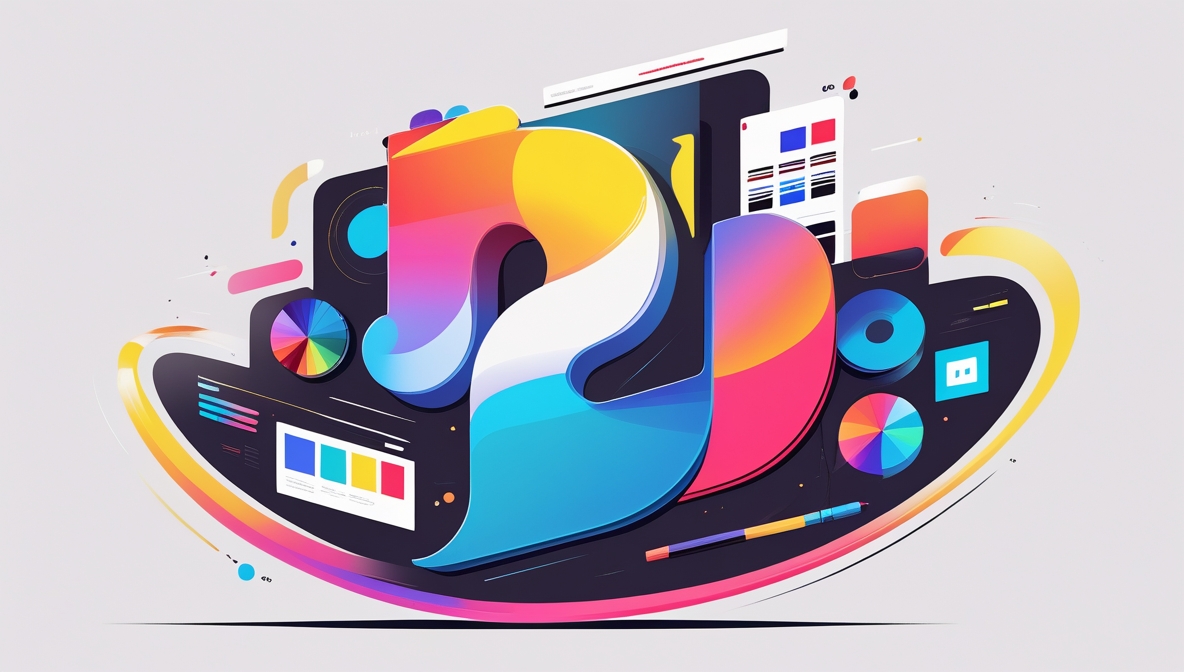Design Tips for Creating an Eye-Catching Blog Logo
Creating a blog logo that grabs attention and leaves a lasting impression is an achievable goal with the right approach. A well-designed logo serves as a visual cornerstone for your brand and communicates your blog’s personality at a glance. Follow these actionable tips to design a standout logo for your blog.
Understand Your Blog’s Identity
Before designing, define what your blog represents. If you’re new to blogging, understanding how to start a blog and identifying your niche can provide the foundation for a logo that aligns with your brand’s purpose. Think about your niche, target audience, and the message you want to convey. Whether your blog is about tech, travel, or lifestyle, clarity about your identity will guide your design choices. A blog focused on minimalism, for instance, might benefit from a sleek, modern logo, while a food blog could use vibrant colors and playful typography.
Choose Colors with Purpose
Colors evoke emotions and set the tone for your brand. Use a color palette that aligns with your blog’s theme:
- Bold colors: Convey energy, enthusiasm, or creativity.
- Neutral tones: Communicate professionalism or minimalism.
- Warm hues: Elicit feelings of comfort and approachability.
Stick to two or three complementary colors to maintain visual balance and avoid overwhelming the design.
Keep It Simple
Simplicity enhances recognition. Complex logos may look impressive initially but are harder to remember. Focus on creating a design that works at various sizes, from website headers to social media profile pictures. Avoid cluttering the logo with unnecessary elements or intricate patterns. Following general blog design tips, such as maintaining a clean and minimal layout, ensures your logo complements your overall blog aesthetic without overwhelming it.
Opt for Versatile Fonts
Typography plays a significant role in logo design. Choose fonts that reflect your blog’s tone while remaining readable across different platforms. Some font tips include:
- Serif fonts: Ideal for traditional or academic blogs.
- Sans-serif fonts: Perfect for modern, casual, or tech-focused blogs.
- Script fonts: Add personality but use sparingly to maintain readability.
Avoid using more than two font styles in your logo to ensure a cohesive look.
Focus on Scalability
Your logo should look great on both large and small scales. Test your design by resizing it for different use cases, such as website headers, social media icons, and merchandise. A scalable logo maintains its clarity and impact at every size.
Incorporate Meaningful Symbols
Icons or symbols can add a layer of storytelling to your logo. Choose elements that are relevant to your blog’s theme. For example:
- A travel blog might use a globe or compass.
- A photography blog could feature a camera lens.
- A personal blog might incorporate a monogram for a personal touch.
Use resources like coolsymbol.now to explore unique icons and symbols that can inspire your logo design. These can add a creative flair while staying relevant to your blog’s theme. Make sure the symbols you choose are not overused or generic within your niche.
Emphasize Balance and Proportion
A balanced logo feels visually pleasing. Pay attention to the alignment of text, icons, and other elements. Use grids or design tools to create harmony between different components. Symmetry can create a clean, professional look, while intentional asymmetry can convey creativity and uniqueness.
Create Contrast for Visual Impact
Contrast draws attention to key elements of your logo. Combine light and dark shades or pair bold fonts with thinner ones to create visual interest. Contrast also improves readability, especially on screens of varying resolutions.
Test Across Platforms
Your blog logo will appear in various digital and physical spaces. Test its appearance on:
- Websites and blogs.
- Social media platforms.
- Printed materials like business cards or merchandise.
Ensure the design remains impactful and legible on all mediums.
Get Feedback from Your Audience
Seek opinions from people who represent your target audience. Ask them how the logo makes them feel and if it effectively communicates the essence of your blog. Constructive feedback can help you refine your design for maximum impact.
Invest in Quality Design Tools
Use reliable tools or software to create your logo. Programs like Adobe Illustrator, Canva, or Figma offer templates and customization options that simplify the design process. If design isn’t your strong suit, consider hiring a professional graphic designer.
Keep Future Growth in Mind
Your blog might expand into new niches or platforms over time. Design a logo that allows for flexibility without losing its core identity. Avoid trends that may date the logo quickly and aim for a timeless look.
Include Negative Space Wisely
Negative space, or the empty space within a design, can enhance your logo’s elegance. Clever use of negative space, like FedEx’s hidden arrow or Amazon’s smile, adds depth and creativity. Experiment with how shapes and letters interact to create hidden meanings.
Experiment Before Finalizing
Create multiple variations of your logo and test different combinations of colors, fonts, and layouts. Comparing options side-by-side can help you determine which design resonates most with your vision.
Ensure a Strong First Impression
Your logo is often the first interaction readers have with your blog. A polished, intentional design conveys professionalism and invites them to explore further. Pay attention to every detail to create a logo that aligns with your brand and inspires confidence.
A well-crafted blog logo is an asset that strengthens your brand identity and engages your audience. By applying these design principles, you can create a logo that reflects your blog’s personality and leaves a memorable impression.














Post Comment